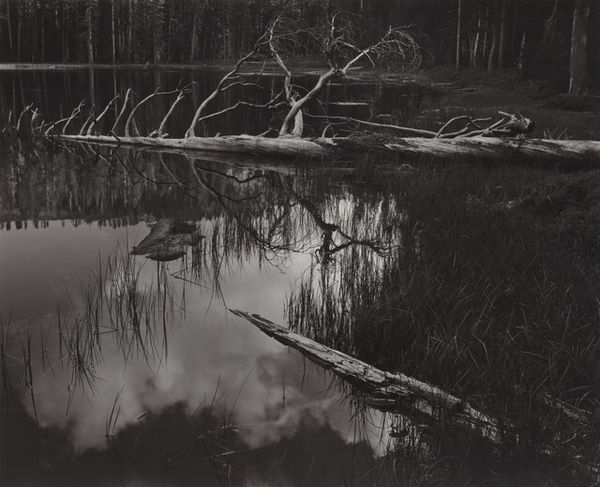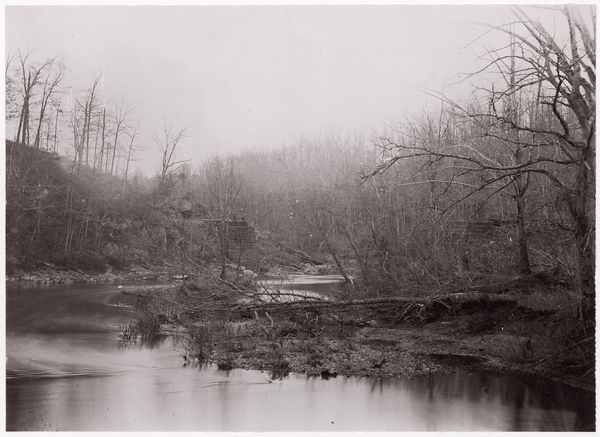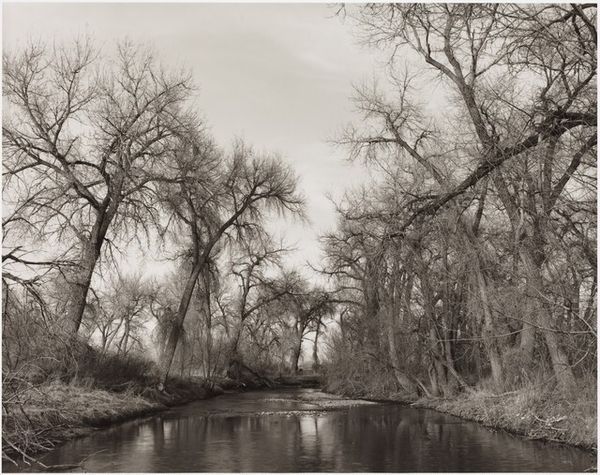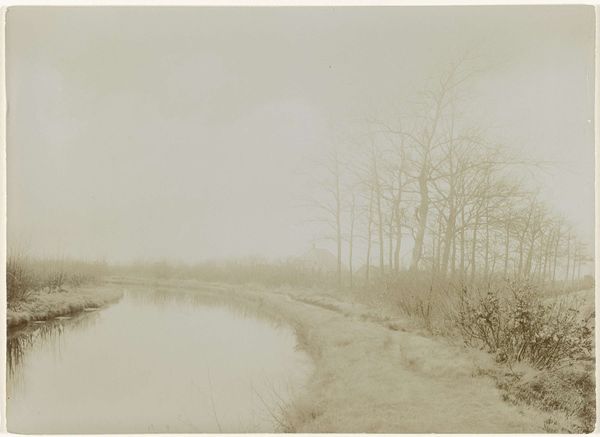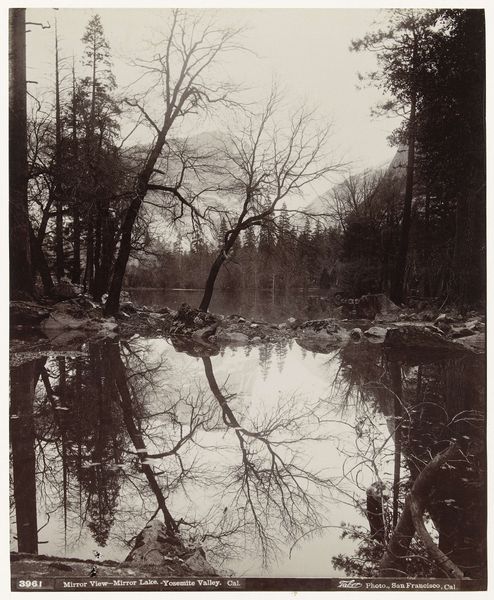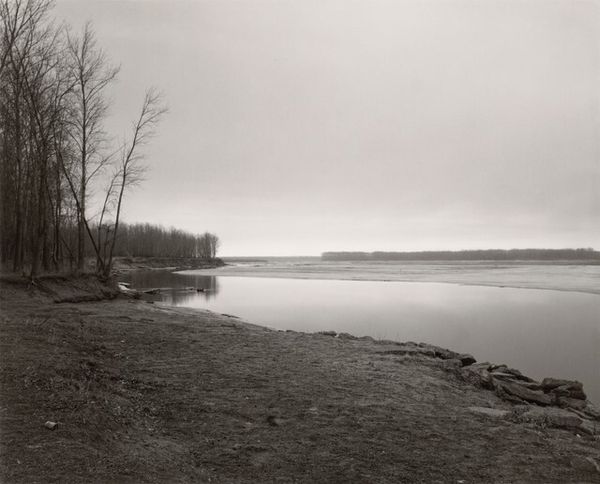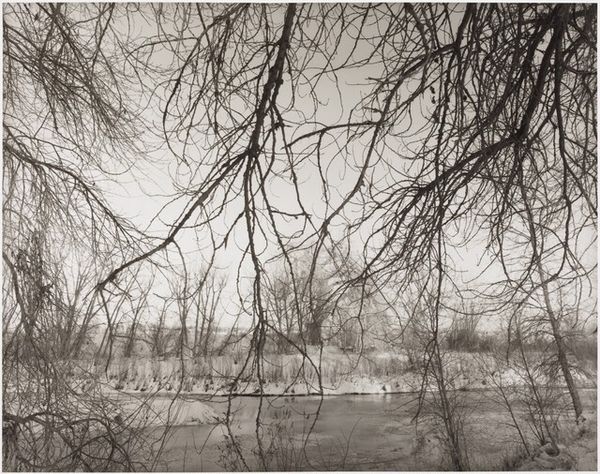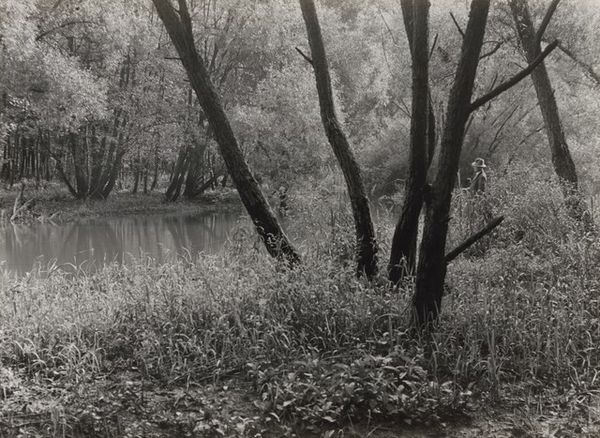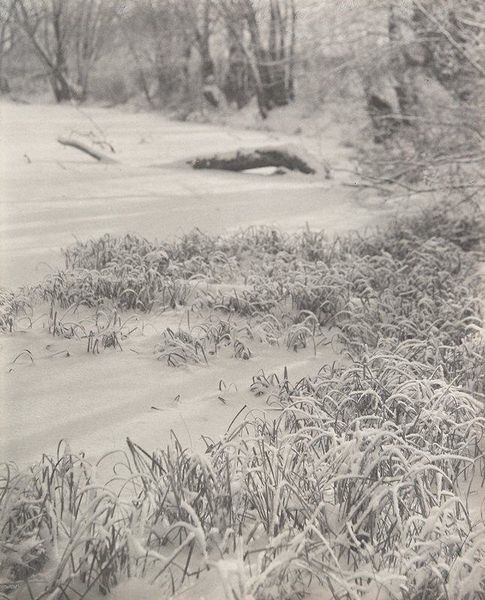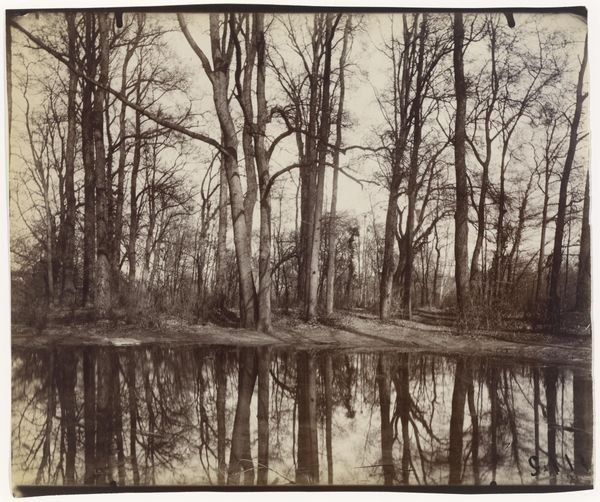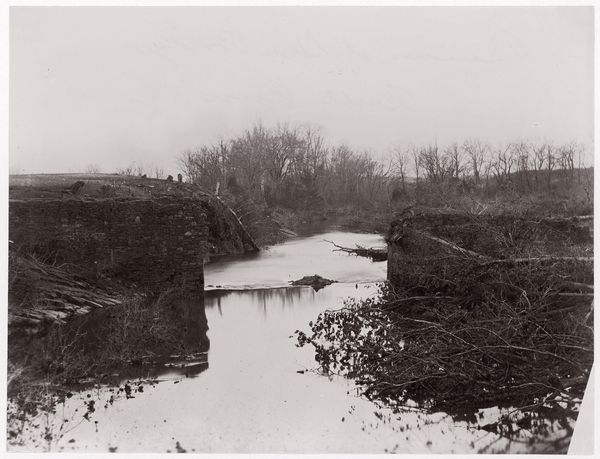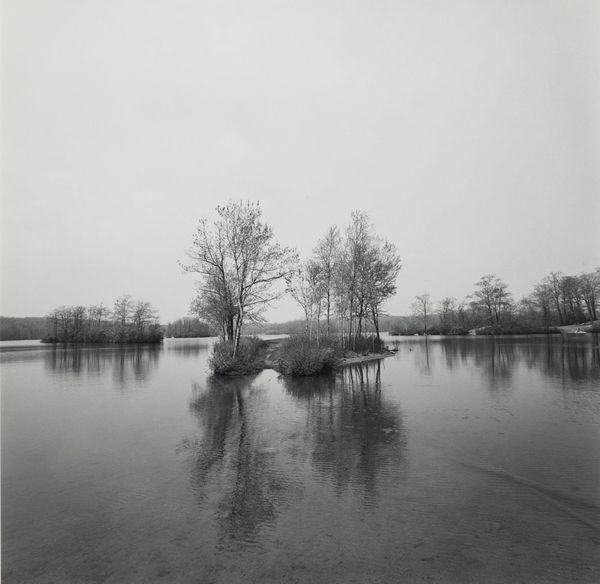
Spring Flood Debris, East of Fort Collins, Colorado (Cache la Poudre River) Possibly 1996 - 2009
0:00
0:00
photography, gelatin-silver-print
#
black and white photography
#
landscape
#
nature
#
photography
#
outdoor scenery
#
gelatin-silver-print
#
monochrome photography
#
monochrome
#
monochrome
Dimensions: image: 35 × 44.4 cm (13 3/4 × 17 1/2 in.) sheet: 40.3 × 50.6 cm (15 7/8 × 19 15/16 in.)
Copyright: National Gallery of Art: CC0 1.0
Editor: Here we have William Wylie’s gelatin silver print, “Spring Flood Debris, East of Fort Collins, Colorado (Cache la Poudre River),” likely from sometime between 1996 and 2009. It’s incredibly stark. All the tangled debris in the foreground contrasts so sharply with the stillness of the water. What symbols do you see embedded in this image? Curator: That contrast you pointed out is quite key. Debris, particularly natural debris like fallen branches, can often represent disruption, or the forceful hand of nature, but also regeneration. The water…does it seem still to you, or reflective? Editor: It feels reflective...both literally and metaphorically, maybe. The reflection of the power lines especially. Curator: Ah, the power lines! Wonderful observation. They create a vertical visual echo. What do those symbols juxtaposed – the organic debris and that hard geometric reflection – suggest to you? Perhaps the enduring presence of technology reshaping the landscape? The flooding is a symptom of disrupted weather patterns – natural disaster accelerated through man-made decisions… do you notice a dialogue here? Editor: Yes, a really stark one! The scene itself feels very grounded in the present moment, yet it carries such weighty implications about long-term changes, how the land remembers. It is an image of ecological tension, with the unnatural power line towers set within nature's cyclical rhythm. Curator: Exactly. It's like the photograph freezes a point in time where these themes all converge, challenging our comfortable separation from nature's forces. What will those bare trees witness in another decade? Another century? It becomes an open ended inquiry, doesn't it? Editor: Absolutely. I see a lot more depth in what might have initially appeared to be simply a landscape photograph. Curator: The river continues to flow while also reminding us about its precarity; an important point about all lifeforms, indeed.
Comments
No comments
Be the first to comment and join the conversation on the ultimate creative platform.
